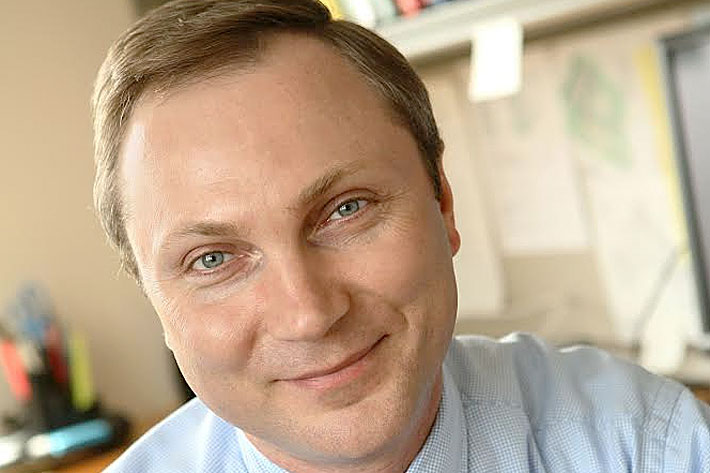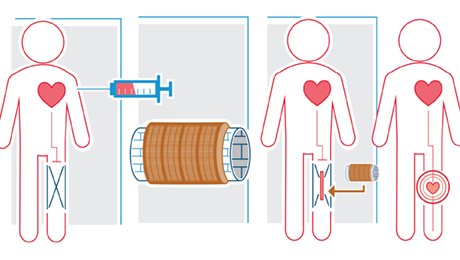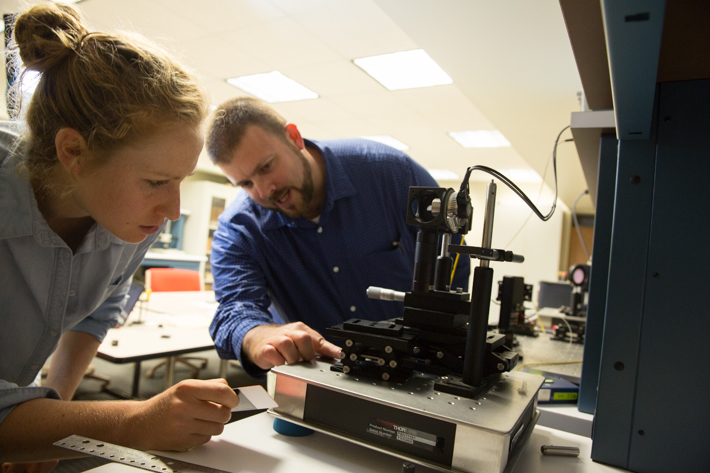The George Washington University School of Engineering and Applied Science has recruited a leader in cardiovascular disease research to chair the Department of Biomedical Engineering.
Igor Efimov, who comes to GW from Washington University in St. Louis, will serve as the first permanent chair of the school’s newest department, which launched this fall. He begins his new post in January.
The biomedical engineer is advancing new therapies for treating patients with abnormal heart rhythms—like an implantable, custom-fit device that wraps around a patient’s heart and detects impending cardiac arrest. Sensors on the device send signals to a smartphone, which gives doctors real-time data on the heart’s functions.
And unlike a traditional implantable defibrillator—which can deliver up to 1,000 painful volts of electricity to the heart—Dr. Efimov’s cardiac implant applies 100 times less energy. It also provides a high-definition view of the heart, resulting in more precise, accurate disease monitoring and limiting false positives.
Considering that heart disease is the leading cause of death globally, Dr. Efimov’s tiny gadget has the potential to make a big impact. Every year, an estimated 600,000 people in the United States die from the disease, according to the Centers for Disease Control and Prevention (CDC).
In addition to an impressive research profile, Dr. Efimov brings a “comprehensive vision” to GW that will help elevate the university’s budding Biomedical Engineering Department, said SEAS Dean David Dolling.
"Dr. Efimov is very well-known in the biomedical engineering community and is world-renowned in the field of cardiovascular science,” Dr. Dolling said. “His research complements existing strengths within GW. He also has extensive experience collaborating with others in the fields of imaging, tissue engineering and medical instrumentation.”
Part of that vision involves capitalizing on GW’s unique location in Washington, D.C. Dr. Efimov not only plans to team up with physicians at Children’s National Medical Center, but he also hopes the department will train students to become future regulatory officers for the CDC, the U.S. Food and Drug Administration and the National Institutes of Health.
“What is really unique about GW is the fact that the university is located in the heart of the capital,” Dr. Efimov said. “Next-door neighbors include every major governmental and international institution.”
He also foresees GW biomedical engineers working in collaboration with international organizations, like the World Bank, to develop low-cost technologies for health care and heart monitoring in developing countries.
Dr. Efimov earned his Ph.D. in biophysics at the Moscow Institute of Physics, a leading Russian university established in the former Soviet Union. He said “serendipity” led him to a position in a heart research laboratory, but a history of heart disease in his family kept him interested in the field.
Once he finished his “primarily theoretical” degree, Dr. Efimov said he desired to test his theories in real-life situations. He accepted a post-doctoral position at the University of Pittsburgh, where he worked with a pioneer in optical mapping of cardiac arrhythmias. Before joining the Department of Biomedical Engineering at Washington University in St. Louis, he conducted research at the Cleveland Clinic and was a professor at Case Western Reserve for four years.
Dr. Efimov has dedicated his research to investigating cardiac arrhythmias, or what he calls “tornado-like rotors of electrical activity rushing through the heart.”
The implantable cardiac device that he is currently perfecting uses MRI and CT machines to scan a patient’s heart. Then, using a 3-D printer, he and his team can create a custom-made shape to fit any particular heart. The end result resembles a net of golden ringlets that hug the heart.
These gold ringlets are actually a network of more than 30 electrodes that can monitor electrical activity, mechanical contractions, oxygen levels or the presence of certain enzymes.
“We can correct the rhythm by applying very low energy from those gold electrodes to many, many different locations, to essentially stop and restart normal cardiac functions,” Dr. Efimov explained.
Defibrillators, by contrast, only sense electrical activity from one or two points on the heart, which sometimes is not enough to determine whether a patient is having a heart attack. This can lead to unnecessary shocks to the heart, which feel like a “mule kicking you in the chest” and can cause long-term damage, Dr. Efimov said.
The device, which Dr. Efimov predicts could land on the market in the next 20 years, could revolutionize the pacemaker industry.
“That is what I will be working on for the rest of my life now, because I think it is very exciting to bring a completely new dimension to implantable device therapy,” Dr. Efimov said.

A representative 3-D elastic membrane integrated on a rabbit heart. The device has more than 30 electrodes that can automatically deliver corrective shocks to the heart and feed live data wirelessly to doctors. (Photo courtesy of University of Illinois and Washington University)
At GW, Dr. Efimov said he would continue working on this device. He also has started conversations with a number of GW faculty about creating similar monitoring technologies that could be put on the skin rather than implanted inside the body. Dr. Efimov said this type of device could be built and translated much quicker—maybe even within the next five years—since it would require fewer human trials than more invasive implantable procedures.
Dr. Efimov is already looking forward to the opening of the Science and Engineering Hall, which will allow him and his collaborators to easily design and test these innovative gadgets. The new building includes a clean room that will be used to build devices at the nano-level and a microscopy suite with some of the most state-of-the-art imaging equipment available.
The Science and Engineering Hall also will house faculty from multiple science and engineering departments—a feature that Dr. Efimov said will breed collaboration.
Vice President for Research Leo Chalupa said Dr. Efimov’s focus on interdisciplinary research is very much in line with the university’s strategic plan.
“He has the vision to build a world-class department that will span both the faculty in SEAS as well as the School of Medicine and Health Sciences and the Columbian College of Arts and Sciences,” Dr. Chalupa said.
Dr. Efimov’s wife, Tatiana Efimova, will join the SMHS Department of Anatomy and Regenerative Medicine. As they prepare to move to Washington, D.C.—a city Dr. Efimov said he always loved—the researcher is most excited for the unknown element that accompanies the beginning of the new Biomedical Engineering Department.
“That was a major attraction for me,” Dr. Efimov said. “not only to be chair for an existing department, but rather, to build something new.”





